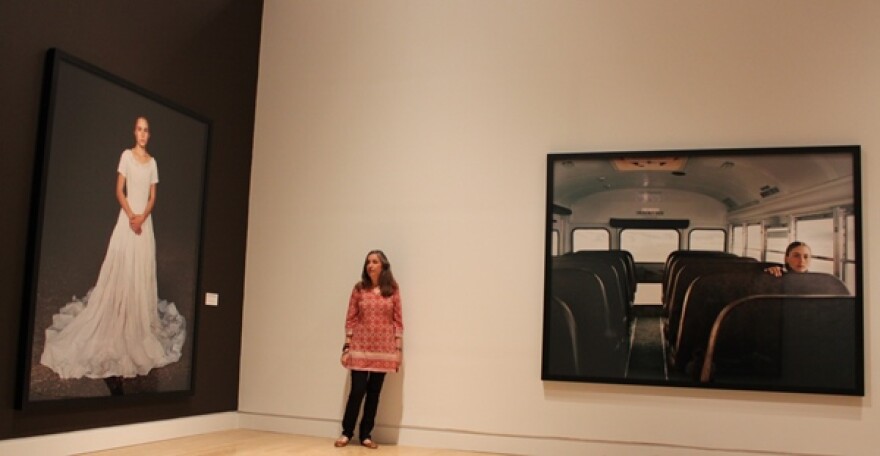In the exhibition Laura McPhee: River of No Return at the Kemper Museum of Contemporary Art, the more than two dozen photographs - each six by eight feet - loom large. McPhee's series explores the grandeur of the West, tensions between ranchers and environmentalists, and human impact on the land - and its often unintended consequences.
Growing up McPhee
Laura McPhee grew up in central New Jersey in what she describes as an "unusually creative environment." Her father is John McPhee, veteran reporter for The New Yorker; her mother, Pryde Brown, is a photographer.
"I was always interested in mainly literature and writing," says McPhee. "But my mother’s interest in photography led me into that as well. I learned photography in her darkroom."
McPhee went on to study at Princeton University, where she met photographer Emmet Gowin, and Rhode Island School of Design. She says her father’s writings about the natural world had a big influence on her work. (Her sisters - Jenny McPhee (novelist), Martha McPhee (novelist), Sarah McPhee (art historian), and Joan Sullivan (writer, educator) - are also in the arts).
Connection to the idea of the West
In 2003, McPhee was selected for an artist-in-residence program in Idaho, through the Alturas Foundation.
"At first, I thought, 'I’m from New Jersey,' I have no connection to the West in that profound way that I thought I might need somehow," she recalls.
In a sense, McPhee says, it’s become her life’s work to "look at and understand the language of a place." She's photographed an urban park in New York and architecture in Calcutta, India. For the project in Idaho, a starting point was connecting to the history of her grandmother, a schoolteacher who traveled all over the West teaching miners’ children.
"Imagining her life and what that looked like, and trying to understand that in terms of 21st century reality fascinated me," says McPhee. "The past and the present being at work at the same time."
The grittier side of nature

The nearly 30 photographs in the exhibition called Laura McPhee: River of No Return document the Sawtooth Valley of central Idaho.
There are rows of aspen trees on the summer solstice with years, crosses, and names carved into the bark; a man hunched by the water, in camouflage, dressed for collaring wolves; and quartered rocky mountain elk, stark red on white snow.
"The image of the quartered Rocky Mountain elk is one of my favorite images," says McPhee. "And part of it is because, as an Eastern girl, I had no sense of what hunting could mean. And how much of a skill, even an art, it really is.
"I actually found it one of the most beautiful and profound experiences working there. Working there changed the way I thought about so many things, and I hope that comes through in this work as well."
Documenting the passage of time
McPhee returned to Idaho four times between 2003- 2004; she continued to take photographs up until 2008. Some of the photographs revisit places and people, like a girl named Mattie, who grew up on a ranch.

Two photographs of Mattie hang next to each other at the Kemper. In one, she’s wearing a long white 1950s wedding dress, her grandmother’s; in the other, in pigtails, she’s peeking out behind a row of seats on a school bus.
"For me, it’s very important that the work has time within it," she says. "The sense that time elapsed while I was working on the project, as well as geological time, or the time that you see in the changed environment."
Large scale makes subject more present
All of McPhee’s photographs in the series were taken with an 8 x10 view camera. Think 19th century photography: a box on a tripod. And in the exhibition – the images are blown up to a large-scale, 6 by 8 feet. The prints are so large you can see every detail.
"I realized the pictures needed to have scale in order to reflect the kinds of things that I was seeing and feeling about the place," McPhee says. "It has the grandeur of the West, but I also wanted at the same time to have very small things become very large.
"Sometimes these things are about the environment, or management of the land. Lots of different conversations about how we use the land. And I felt like the scale of them makes them more present."
Laura McPhee: River of No Return, through September 22, 2013, at the Kemper Museum of Contemporary Art, Kansas City, Missouri.











